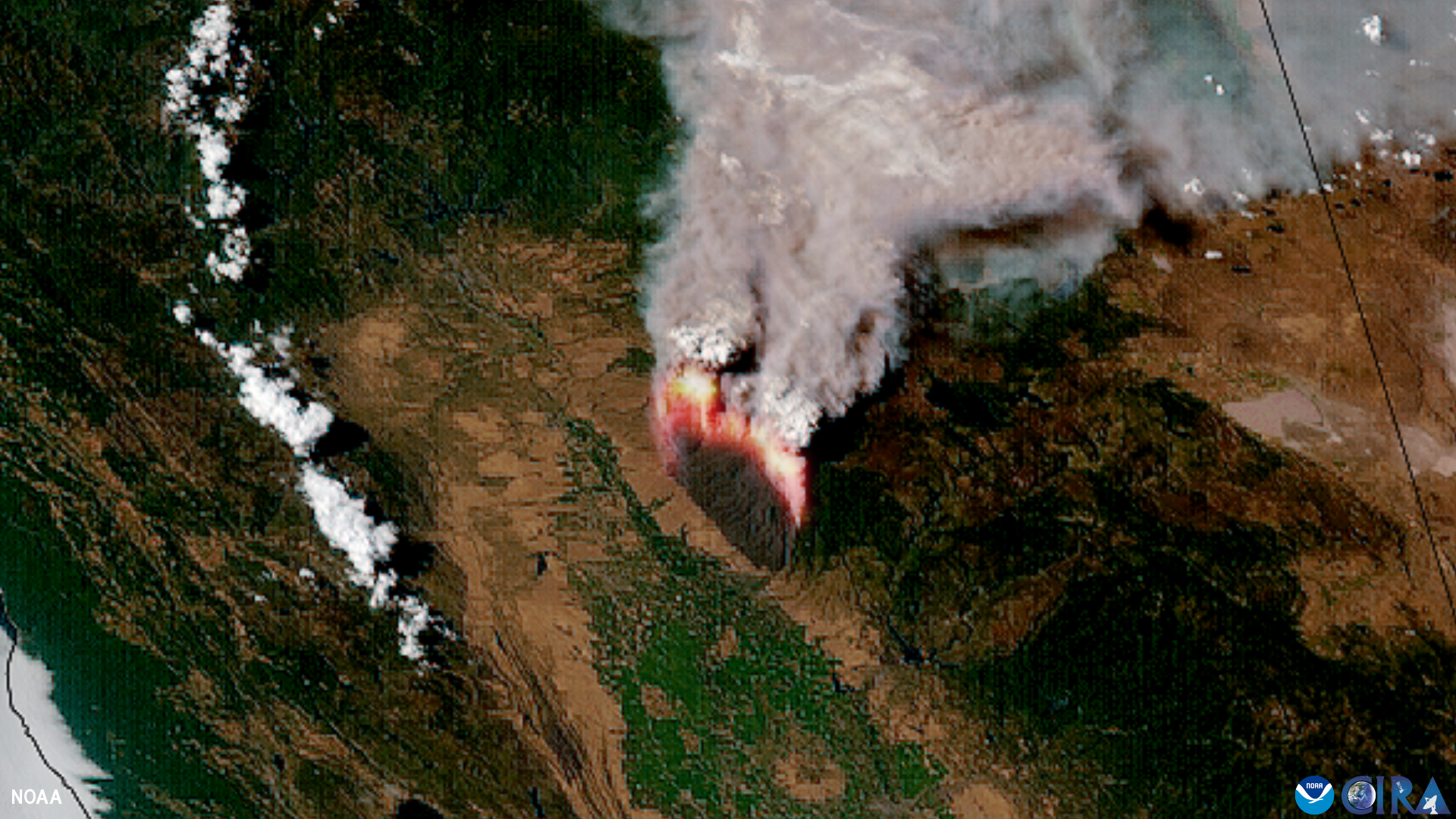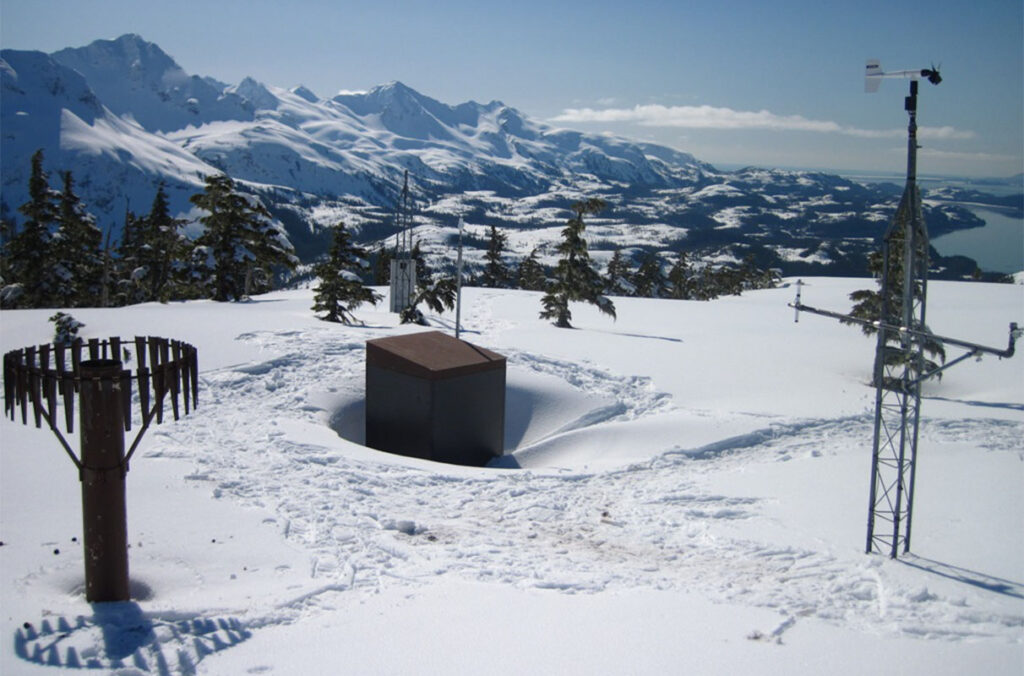10/02/25
Best of the West: Where AI is tackling western challenges; Govs model bipartisanship; Battery breakthrough; Downwinders clinic; Fusion research; and a rare bird hybrid

The Western Governors' Association keeps you updated on the latest news in the West. Here are the top stories for the week starting September 29, 2025. (Photos courtesy of Adobe Stock Images, NOAA Satellites, Washington State University, and the University of Texas at Austin College of Natural Sciences).
The West has always been home to unique landscapes and unique challenges, and westerners pride themselves on tackling big issues with an innovative spirit.
Today’s challenges in the West are broad, but many states are tapping into that innovative streak to deploy new technologies like artificial intelligence to tackle issues both old and new.
Let’s take a look around the region at some of the creative ways western states are deploying AI for distinctly western challenges.
One ever-present threat to western landscapes and communities is wildfire. In the past few years, AI has emerged as a promising tool to help detect fires early and coordinate resources to fight them.
Tools like FireScout, Pano AI, Alert Wildfire, and others use advanced technology to monitor wide swaths of land for early fire ignitions. Their AI-backed systems can identify fires quickly and help managers deploy the appropriate resources.
Other companies like Lockheed Martin, Nvidia, and Interra are incorporating machine learning with satellite imagery and other tools to simulate and forecast wildfire patterns. Their mapping and simulation tools can help coordinate resources and decision-making on the ground for firefighters and residents.
and simulation tools can help coordinate resources and decision-making on the ground for firefighters and residents.
NOAA also recently rolled out a fire detection system that collects satellite images and continuously processes them with a set of algorithms that can automatically identify hot spots.
Another constant challenge for much of the West is water, and experts have no shortage of uses for AI to help manage it.
For one, the Bureau of Reclamation is turning to AI to monitor flows and build more accurate models. Reclamation’s recent agreement with Upstream Tech is deploying AI-driven streamflow forecasting across crucial regions like the California Great Basin, Columbia Pacific Northwest, Lower Colorado, Missouri Basin & Arkansas-Rio Grande, and the Upper Colorado.
AI is also being used for smarter irrigation, more efficient water conveyance, more precise allocation, and more.
Last year, researchers at Washington State University developed a new way to use AI to estimate daily snow-water equivalent (SWE) at any location, with or without a measuring station. These measures are crucial for predicting streamflows and allocating water throughout the year, but they traditionally rely on variable measurements from a scattered array of measuring stations.
a new way to use AI to estimate daily snow-water equivalent (SWE) at any location, with or without a measuring station. These measures are crucial for predicting streamflows and allocating water throughout the year, but they traditionally rely on variable measurements from a scattered array of measuring stations.
This week, the University of Idaho’s Rangeland Center is hosting its annual fall forum, which will look at how new ideas and new technologies can address both modern challenges and perennial obstacles for Idaho’s rangeland stewards.
Govs model bipartisanship: Utah Governor Spencer Cox and New Mexico Governor Michelle Lujan Grisham – WGA's Chair and Immediate Past Chair, respectively – sat down for an interview with 60 Minutes last weekend to discuss ways to overcome partisan divisions.
Their conversation follows an event at Notre Dame last week that.jpg) featured the pair in a similar discussion about western state pragmatism and bipartisanship. Governors Cox and Lujan Grisham have emerged as leading voices for collaboration and healthy disagreement across party lines.
featured the pair in a similar discussion about western state pragmatism and bipartisanship. Governors Cox and Lujan Grisham have emerged as leading voices for collaboration and healthy disagreement across party lines.
“I see [Gov. Lujan Grisham] as an American before I see her as a Democrat or anything else. I think we need more of these conversations,” said Governor Cox. “I think we need them in our own homes, in our own neighborhoods, in our school boards, in our city councils all across the country.”
Battery breakthrough: the Denver-based company Peak Energy announced the successful deployment of the first grid-scale sodium-ion battery system in the U.S. last week.
The 3.5 MWh system is operating at a solar and renewable energy facility in Watkins, Colorado. Its technology seeks to deliver lower operating and maintenance costs while remaining cost-competitive with other leading systems.
Downwinders clinic: earlier this year, Congress reauthorized and expanded the Radiation Exposure Compensation Act (RECA), which compensates people who developed serious illnesses from nuclear weapons testing and development.
Now, the Intermountain Health Downwinders Clinic, located in St. George, Utah, is hitting the road to help inform and assist residents with their RECA applications.
The clinic is hosting events in Provo/Orem and Salt Lake City, Utah, and Idaho Falls, Idaho.
Major fusion research: last week, New Mexico Governor Michelle Lujan Grisham announced that Pacific Fusion has selected New Mexico for a $1 billion nuclear fusion research and manufacturing campus.
The facility will feature a state-of-the-art research and manufacturing facility to push towards major breakthroughs in commercial fusion power.
“Pacific Fusion’s decision to build in New Mexico proves that our state can compete—and win—in the race to attract the most innovative companies in the world,” Governor Lujan Grisham said. “This project will create good jobs, expand our clean-tech economy, and ensure New Mexico continues to lead in the industries of the future.”
Rare bird hybrid: researchers at the University of Texas at Austin recently discovered the first recorded natural occurrence of a Blue Jay mating with a Green Jay in the wild.
Though similar in appearance – aside from their color – the two species are separated by 7 million years of evolution, and their natural ranges didn’t overlap until just a few decades ago.
Blue Jays typically live in the eastern U.S., while Green Jays are native to tropical areas in Central America. Changing climate patterns have pushed Blue Jays west and Green Jays north, with their ranges now converging around San Antonio, Texas.
The researchers opted not to name the hybrid bird just yet.